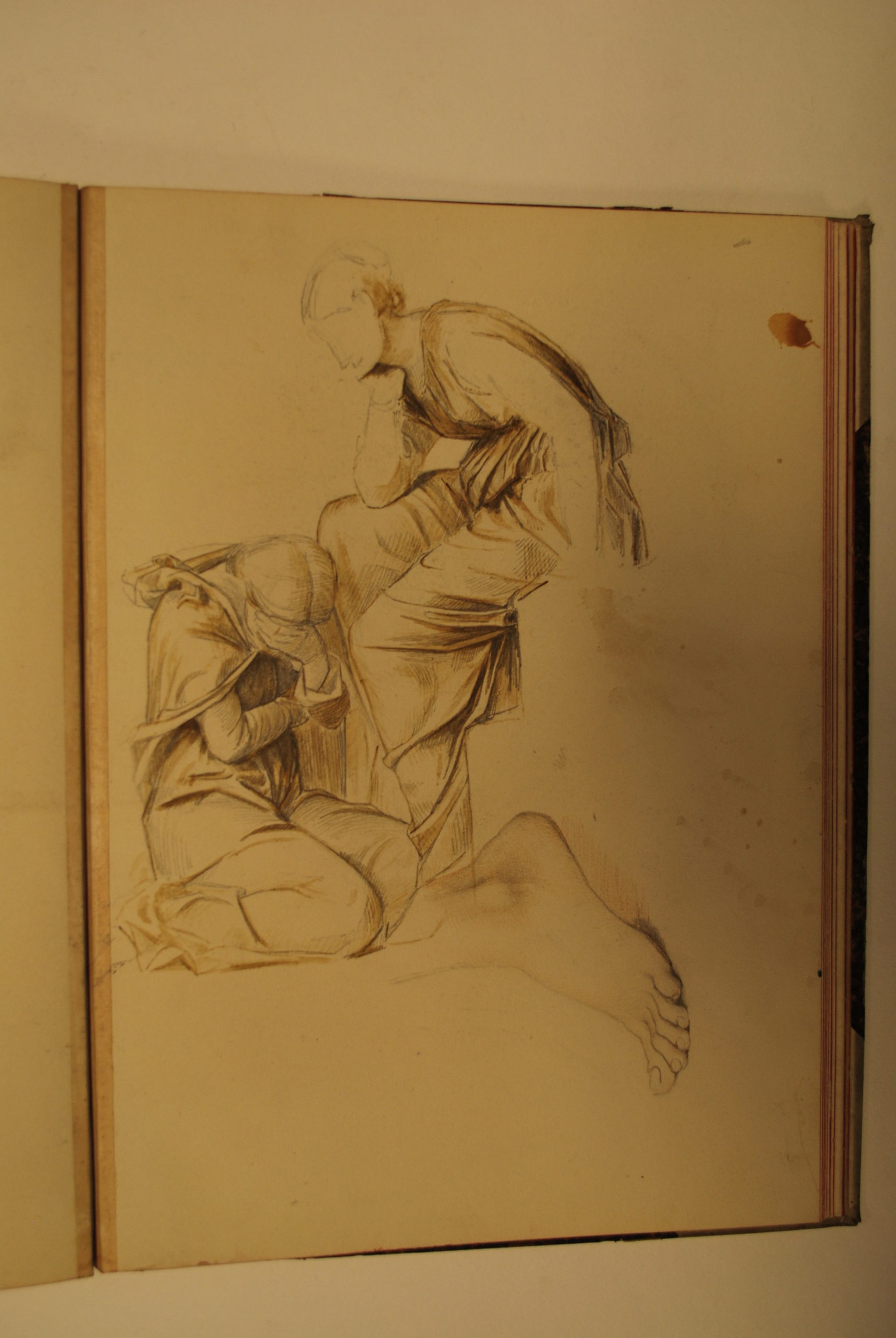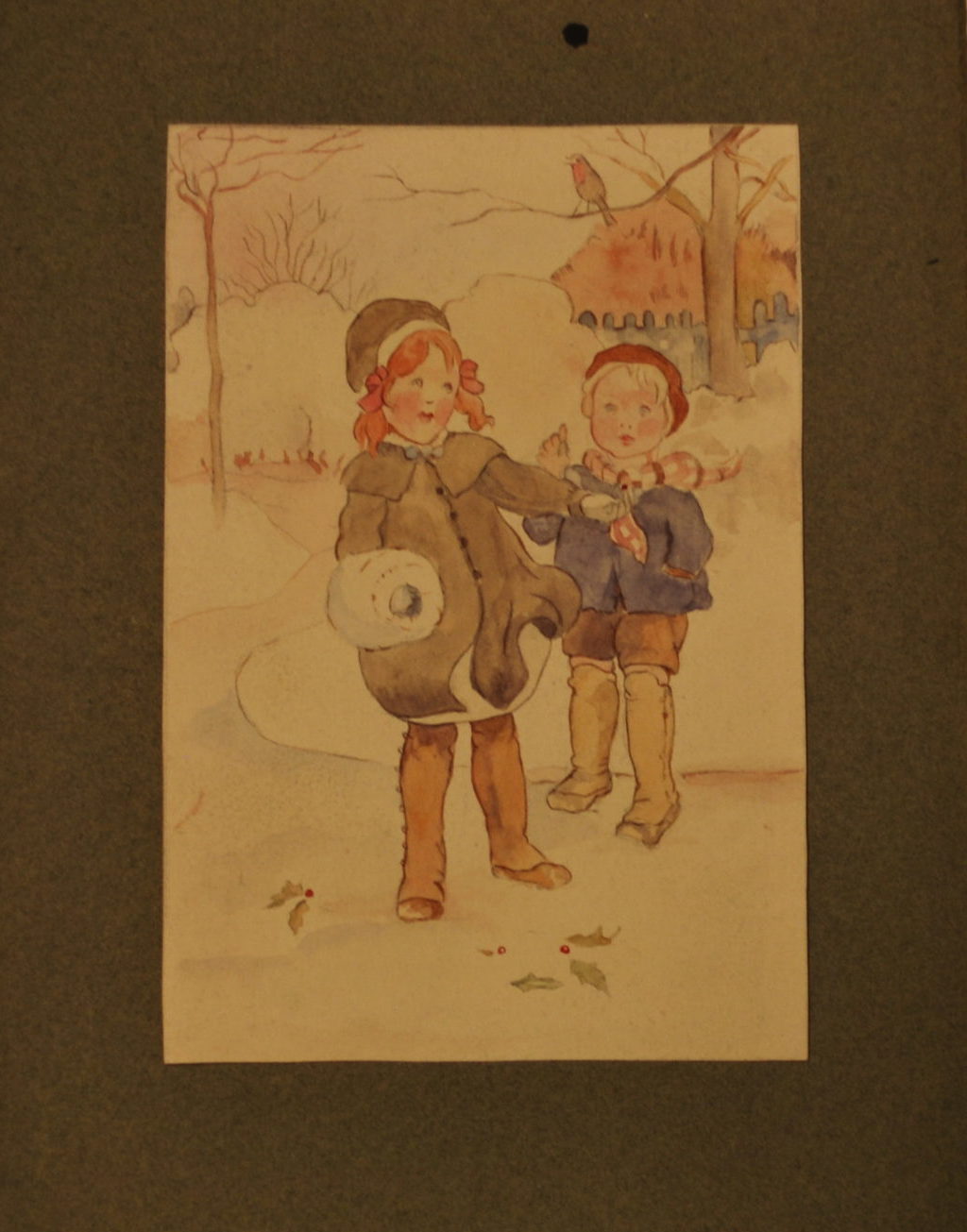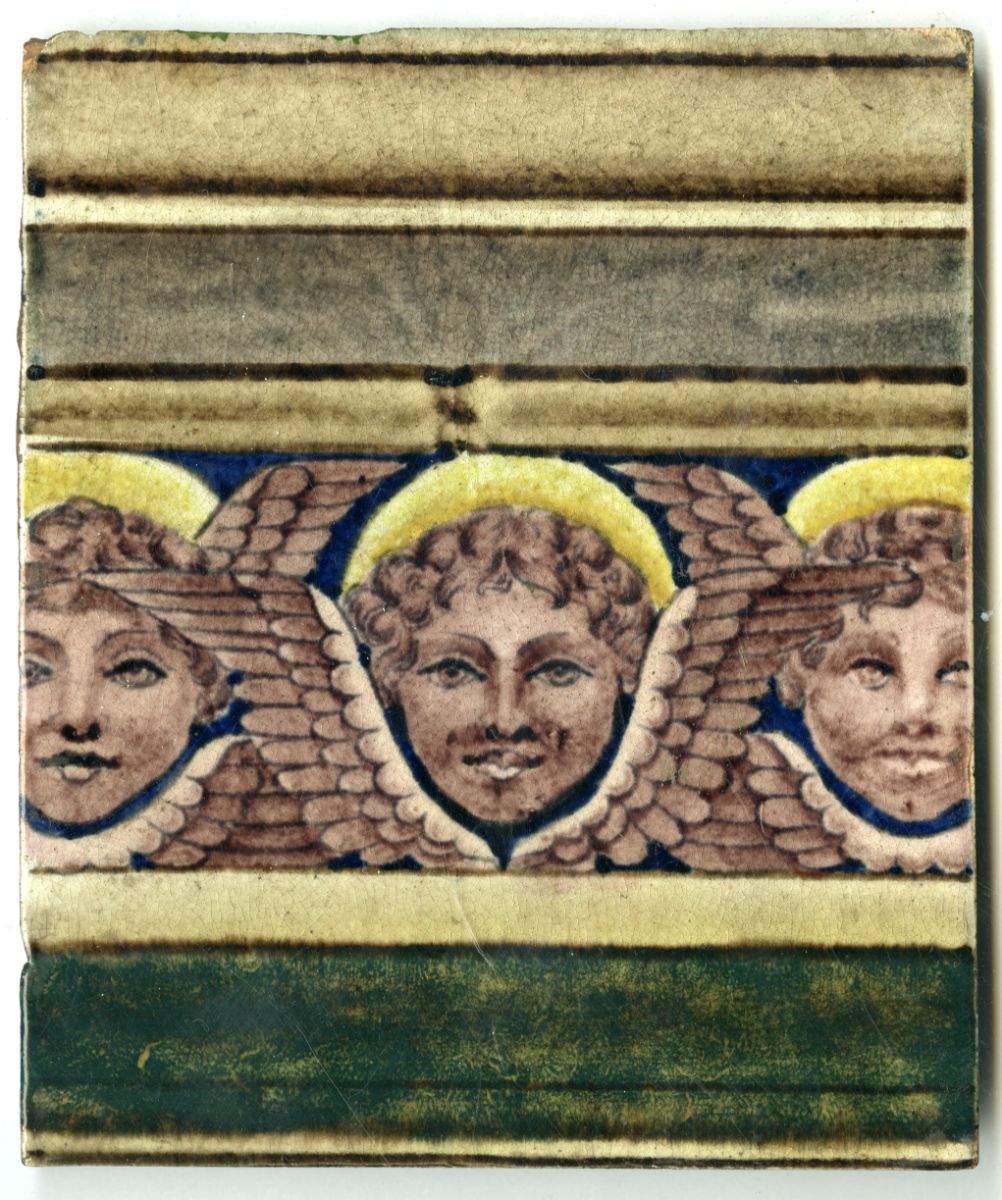When the De Morgan Collection was ‘accessioned’ (formally entered into the Museum) in the 1960s, all of the drawings were assumed to be by Evelyn De Morgan, as she was the artist working on paper.
Through much research, we now know that at least a quarter of the drawings in the De Morgan Collection are actually by other artists. Some are by her husband, the potter William De Morgan, and are designs for stained glass or sketches made between glazing pots.

Sketches of nude women (c.1860) are now attributed to William De Morgan (left). They are possibly working drawings for his oil painting ‘Ariadne’ (right).

There is a sketchbook of works which is now attributed to her uncle, Roddam Spencer Stanhope, as the sketches are clearly for known paintings by him. Below is an example of a sketch for ‘Patience on a Monument, Smiling at Grief’. The title of the painting is derived from Act II, scene 4 of Shakespeare’s Twelfth Night and echoes Viola’s speech to Orsino, the Duke of Illyria, “She sat like patience on a monument, Smiling at grief.” As Stanhope scholar Simon Poë points out, Stanhope does not paint the scene from the play but merely borrows Shakespeare’s metaphor for the purpose of this allegorical painting. Researching the sketchbook and matching the drawings to finished artworks allowed us to reattribute this sketchbook from Evelyn De Morgan to Roddam Spencer Stanhope.


But there are a number of sketches whose author remains a mystery, including this festive winter scene. Who do you think is the artist who made this cheerful Christmas Card?

It features two charming children playing in the snow, accompanied by holly and a robin. The faces are similar to children drawn by Evelyn De Morgan in the family portraits she made (below left). But they also share similarities with William De Morgan’s charming putti (below right).


Ultimately, the identity of the artist behind this charming Christmas card will probably mystery. Whether crafted by the skilled hand of Evelyn De Morgan or influenced by the whimsy of William De Morgan, the festive scene stands as a testament to the collaborative and creative spirit within the De Morgan family.
As we celebrate the festive season, we can enjoy the magic encapsulated in the winter scene, appreciating its timelessness and the joy it brings, irrespective of the artist’s name. Some mysteries, it seems, are destined to remain unsolved, allowing the beauty of art to speak for itself across generations and festive occasions.






